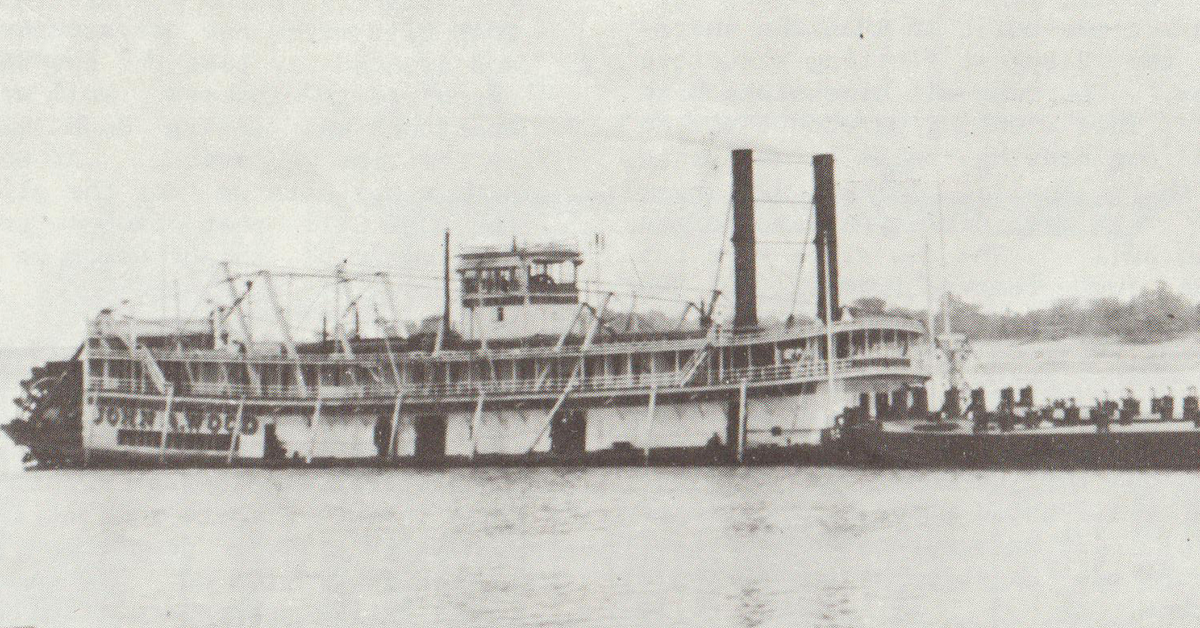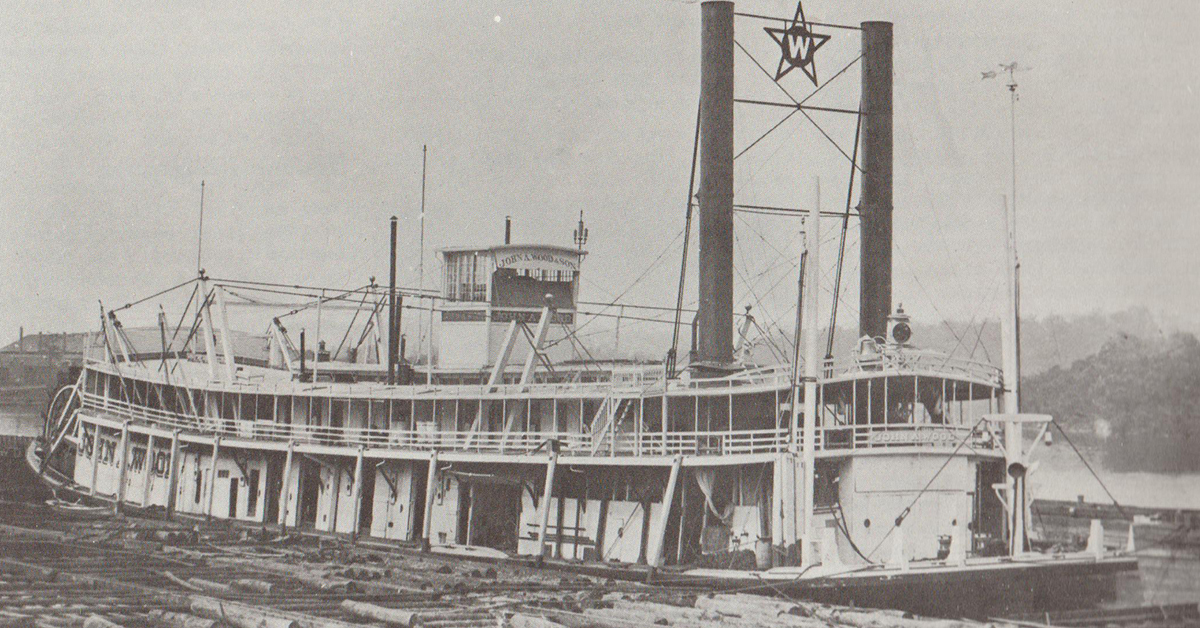Last week, this column looked at the Sohioan, a diesel boat built by St. Louis Ship in 1943 for Standard Oil of Ohio (Sohio). At that time, the Sohioan, with its 2,415 hp., was the most powerful vessel on the rivers. Standard in general had a reputation for doing things in a big way as far as their river operations.
According to the late river historian Capt. Frederick Way Jr., the first towboat owned by Standard was the steam sternwheel C.M. Pate, built at Marietta, Ohio, in 1905. Standard acquired the C.M. Pate, which had a wood hull that measured 111 by 22 feet, at some point prior to 1912, when it burned opposite Gramercy, La. Standard previously chartered the C.J. Reynolds, a wood hulled steam sternwheeler built at Proctorville, Ohio, in 1901, that measured 112 by 22 feet. Capt. E.F. Weick served as master. Standard purchased the C.J. Reynolds before it burned at Donaldsonville, La., in 1915.
In 1915, the Howard Shipyard at Jeffersonville, Ind., built a brand-new vessel for Standard Oil. It was a steam sternwheel craft with a wood hull that measured 130 by 30 feet. Capt. Guy Mallory superintended the construction and came out as master of the boat, which was named Standard. Capt. Canton P. Seitz was master later, and Capt. Laurence McMakin and Capt. Graham Varble served as pilots. Both Seitz and Varble would later have navigation lights named in their honor.
The volume of coal moving to the south by river out of the Pittsburgh area began in earnest following the Civil War and had ballooned by the turn of the 20th century. In 1899, the Monongahela River Consolidated Coal & Coke Company (commonly known as “River Coal” and simply as “the Combine”) was formed by merging some 80 companies. The Combine utilized large steam sternwheel towboats to move vast tows of wooden vessels called “coalboats” that were of varied sizes, but usually about 170 by 26 feet and drawing 7 to 9 feet when loaded.
Due in part to massive losses, the Combine announced late in 1915 that it would discontinue doing business as of January 1, 1916, and that a successor, Pittsburgh Coal Company, would continue to serve the Pittsburgh area. Hundreds of rivermen were out of work and many towboats, including most of the large boats that had handled the huge tows to the south, were relegated to what was known as “the boneyard,” a series of fleets near Pittsburgh where the grand old boats were dismantled or left to rot away.
One of those that had been tied up was the John A. Wood, built in 1870. The 198- by 40-foot (50 feet wide overall) wooden hull was constructed by the McCaskey & Kerr yard at Freedom, Pa., and the boat was completed at Pittsburgh. A. Hartupee built the machinery, which was the first installation of compound condensing engines on a river towing vessel. They were 18’s, 41’s with 8-foot stroke, and the sternwheel was 28 feet 8 inches in diameter by the same width, known as a “square” wheel. John A. Wood & Sons of Pittsburgh owned the vessel, which towed coal to the southland.
With the compound machinery, the boat did not exhaust spent steam through ’scape pipes on the roof or vented through the smokestacks. It, thus, earned the nickname “Silent John.” The John A. Wood suffered a serious accident on the second trip south when the hogchains broke in heavy ice in December 1870. In April 1879, the sternwheel shaft cracked when the vessel was below New Orleans. While limping back upriver, it struck a sunken ship and sank in 18 feet of water. It was successfully raised, but in September 1894 it suffered a serious fire.
Throughout these misfortunes, the boat performed some monumental towing feats. In 1880, it handled what was the largest coal tow at that time, 21 coalboats and eight barges. It went into the Combine in 1900 and towed from Louisville, Ky., south until it was retired in 1915. As Capt. Way put it in a story printed in the March 1969 issue of the S&D Reflector, it lay in the boneyard so long that “her stacks rusted and fell, the paint pealed, the decks caved.”

It was sold to W. Harry Brown of Pittsburgh in July 1918 but still languished. Rivermen were astonished when word circulated in September 1919 that the old derelict had been sold to Standard Oil. It was hauled out on the Elizabeth (Pa.) Marine Ways and completely rebuilt. This project, under the supervision of Capt. E.F. Weick, took about 10 months. The refurbished John A. Wood departed Pittsburgh for Baton Rouge, La., on June 21, 1920.
In service for Standard, one of her masters was Capt. Canton P. Seitz. In 1922, Standard chartered the huge towboat Sprague, which the company bought in 1925. Seitz later served on the Sprague.
The ”Silent John” fell quiet for good when it caught fire at Baton Rouge on November 19, 1925. It burned to a complete loss. In August of that year, Standard had purchased a contemporary of the Wood, the James Moren, built at Elizabeth, Pa., in 1896. Standard soon embarked on building a more modern fleet of steam sternwheelers, and the company morphed to diesel boats in the 1940s.
As a postscript to the account of the John A. Wood, Capt. Way recorded that there was a rumor at the time of her destruction that the crew of the boat had not been unhappy to see it go.
“Every time it rained the roof leaked, and the old boat was sort of a trial for the men who were supposed to keep her going,” Way wrote.
Featured image caption: The John A. Wood in the 1880s. (Photo courtesy of the S&D Reflector)




